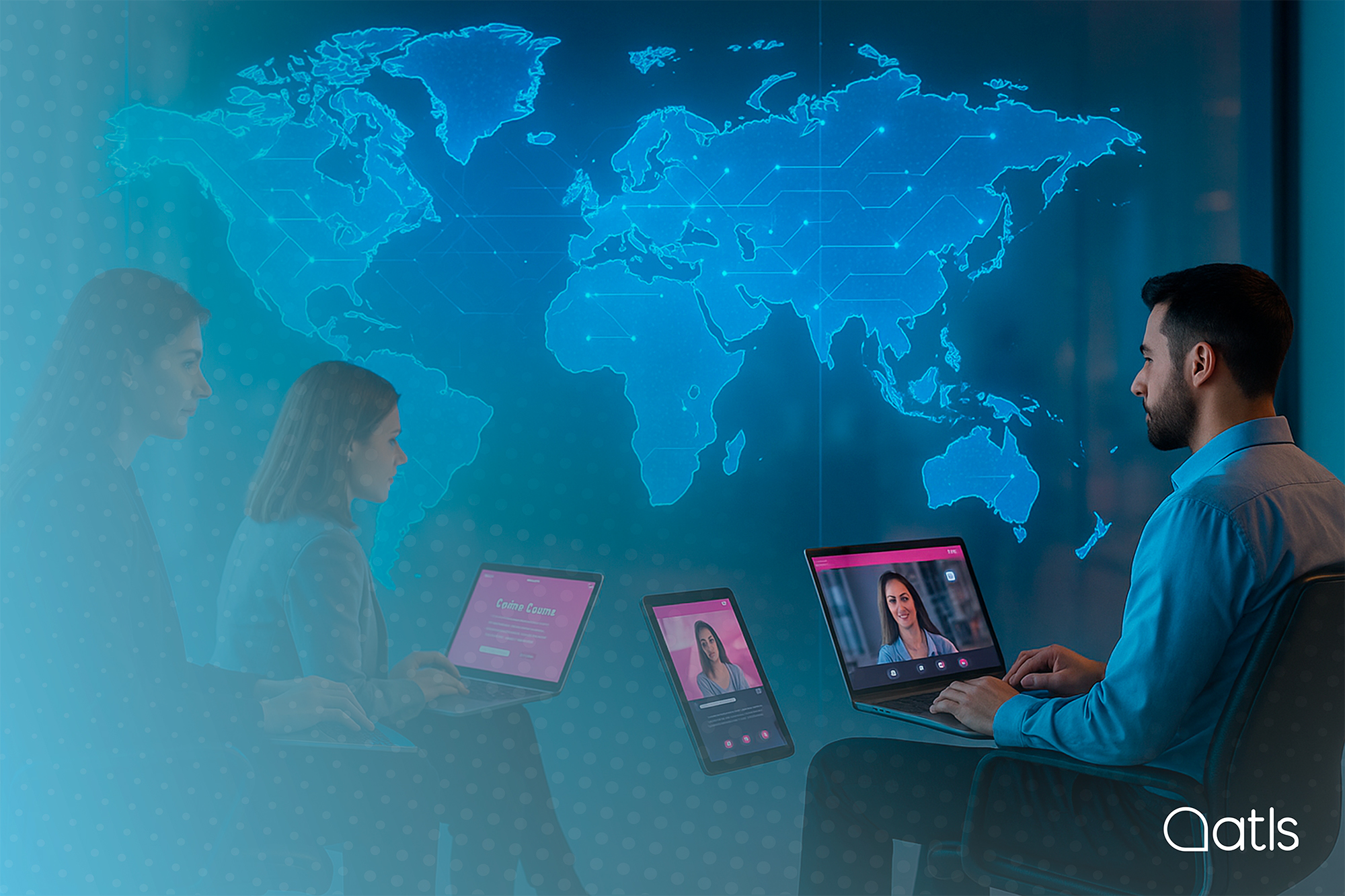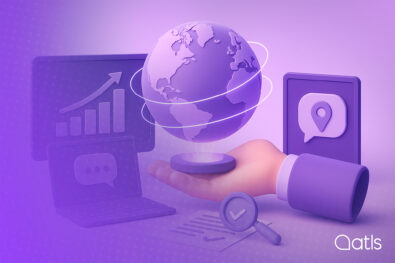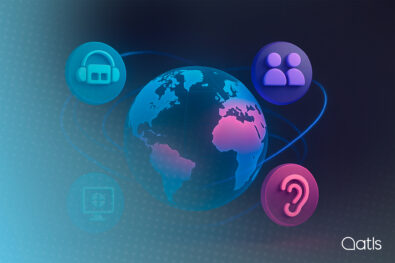In an increasingly digitalised world, online training is now one of the main ways to share knowledge, train teams and make education more widely available.
Businesses needing to train their employees and educational institutions and organisations seeking to reach diverse audiences all find e-learning to be a flexible, scalable and highly effective solution.
However, the real challenge lies not only in creating digital training content but also making it truly accessible and effective for anyone regardless of their language or cultural background.
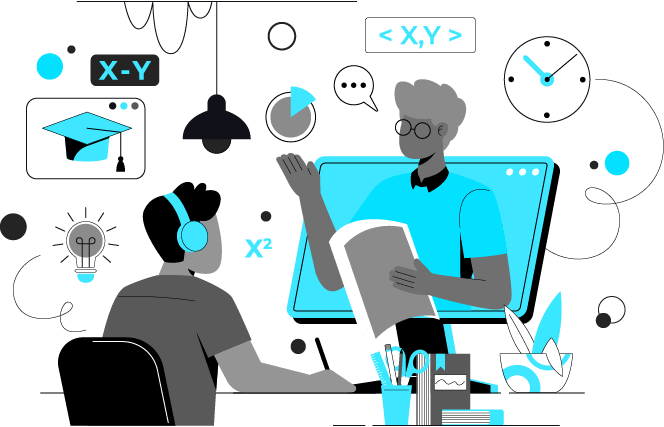
This is where e-learning translation plays a decisive role: it's not a simple word-for-word conversion but instead an end-to-end localisation process which ensures each learner has a relatable, clear and motivating experience.
Localising platforms, online courses and digital content involves much more than just translating texts. It means adapting cultural references, practical examples, images, units of measurement, communication styles and even narrative structure to ensure that all training material makes sense within the user's cultural framework.
It also calls for specialised technical expertise to properly integrate texts into interfaces, questionnaires, interactive videos, subtitles, voiceovers and other multimedia components that are part of the e-learning ecosystem.
In short, translation applied to online training is a key strategy to break down language and cultural barriers, enhance inclusion and ensure that digital learning is not only global but also personalised, engaging and effective.
What is e-learning translation?
E-learning translation is much more than simply rendering words from one language in another: it is a comprehensive process of linguistic and cultural adaptation which makes digital educational materials understandable, engaging and effective for audiences in different countries.
Its purpose is not just to get across the content but also to ensure that the learning experience is the same and consistent for every user irrespective of their native language or cultural context.
This encompasses a wide variety of resources taking in a lot more than just written text. It includes translating and localising training videos with synchronised subtitles and professional dubbing; adapting voiceovers to keep things friendly and motivating; checking and translating charts, infographics and illustrations containing key information; and building all this content into interactive digital interfaces. Even the little things such as menus, buttons, error messages and certificates are essential for making learning feel seamless and natural.
This speciality enables businesses, educational institutions and organisations around the world to run inclusive, global training programmes that can reach students and professionals in different markets.
The added value lies not only in each user understanding the content but also in perceiving it as their own, internalising it more easily and using it in their daily lives. In short, e-learning translation turns online training into a truly universal tool.
The importance of online course translation
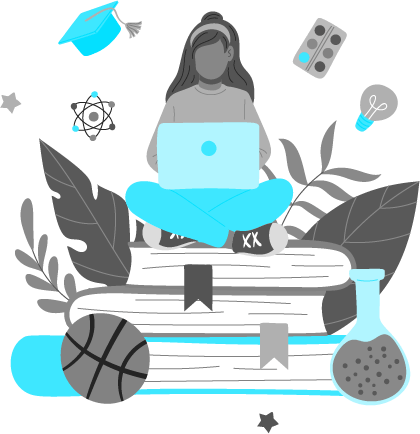
Online courses are now one of the most effective tools for continuing education in companies, universities and schools.
As they are flexible and digital, they can target thousands of people at the same time, adapting to different learning speeds and needs. However, when a course is only available in one language, its reach is significantly curtailed, limiting its true potential impact.
Online course translation breaks down these barriers, turning a local resource into a global product that can get to anywhere in the world. Adapting content to different languages and cultures opens up new opportunities that bring strategic value to both organisations and students alike:
- Expanding your audience to international markets: the same course can be used in different countries, exponentially increasing the number of participants.
- Ensuring equal training opportunities: all users, regardless of their language, have access to the same level of knowledge and training.
- Improving content retention and understanding: when materials are presented in the student's native language, learning is more natural, seamless and in-depth.
- Enhancing brand image as a global and inclusive organisation: delivering multilingual training signals a genuine commitment to diversity and accessibility.
Furthermore, a translated and culturally adapted course is not only more accessible but also generates a higher level of motivation, engagement and success among students.
As they feel recognised in their language and culture, participants get more actively involved which translates into better learning outcomes and a more rewarding training experience for everyone.
E-learning platform translation: an all-inclusive experience
Translating e-learning platforms is a holistic process involving much more than just lesson content. A digital learning platform is made up of a number of layers which shape the user experience and all of them need to be customised to ensure a truly inclusive and global environment.

This includes the user interface as a whole: from navigation menus, buttons and forms to error messages, instructions, push notifications, certificates of completion and even gamification components such as rankings, badges and digital rewards.
An e-learning platform designed to be multilingual does not simply offer literal translations of visible texts but rather builds a complete ecosystem in which each user can seamlessly and naturally interact in their own language. This not only enhances usability but also increases the sense of belonging, breaks down barriers and enables greater immersion in the learning process.
The main challenge in localising e-learning platforms is their technical complexity. This calls for expertise in integrating with LMS (Learning Management Systems) and a range of interactive content formats (SCORM, xAPI, HTML5 and more).
It is also crucial to maintain terminological and visual consistency across all the platform's components to deliver a uniform and professional learner experience in any language.
Translating e-learning platforms is thus not simply a linguistic undertaking but also a technological and strategic one involving specialised translators, localisation engineers and usability experts. The outcome is a training tool ready to be effectively deployed across numerous markets, driving learning without borders.
Translating digital content for effective training
In online training, teaching materials come in a wide range of formats including a lot more than just simple texts.

From PDF manuals and interactive presentations to explanatory videos, dynamic infographics, animations, practical simulations and interactive questionnaires, each resource fulfils a specific educational role which adds to the learning experience.
Digital content translation is the process which ensures that all of these materials can be understood in another language while also retaining their original purpose and conveying the same educational impact.
This entails customising specialised terminology, communication styles, cultural references, multimedia formats and even visual features to make sure the content is equally clear, engaging and effective in every target language.
This process calls for a unique blend of skills:
- Linguistic, to ensure terminological accuracy and consistency in communication.
- Technological, to work with authoring software, localisation tools and e-learning formats such as SCORM, xAPI, and HTML5.
- Educational, to safeguard the teaching intention and make certain the training experience retains its learning value in any language.
At ATLS, we roll out this end-to-end solution through our team of experts in e-learning translation and localisation backed by specialised tools delivering consistency, coherence and quality in every detail.
Our approach ensures that digital content is tailored to the specific features of each language and culture while retaining its essence, thereby making sure that learning objectives are met in all markets.
Online training translation: a step towards internationalisation
For companies looking to expand into new markets and train international teams, online training translation is much more than an operational resource: it is a strategic investment with a direct impact on productivity, talent retention and global competitiveness.
The trick is not just to impart knowledge but also to ensure that it is conveyed with the same clarity, consistency and effectiveness anywhere in the world.
A translated and culturally adapted training programme brings tangible benefits that make a difference in managing multinational teams:
- Putting standardised processes in place across various countries: training is a tool for unifying procedures, protocols and corporate values, making sure all employees operate under the same guidelines no matter where they are.
- Maintaining cultural and linguistic consistency in communication: by learning in their own language, teams feel included, appreciated and aligned with the organisation's philosophy, which enhances engagement and minimises misunderstandings.
- Increasing competitiveness and global reputation: a company that embraces linguistic accessibility demonstrates a real commitment to diversity and inclusion which bolsters its employer brand and image among international customers and partners.
Online training translation also fosters faster and deeper learning as professionals can take in complex concepts in their native language, apply them in their work environment and replicate best practices in their local markets. This not only expedites individual employee growth but also powers the organisation's growth as a whole.
Ultimately, training is the driving force behind business development and its internationalisation can only be achieved through a robust translation and localisation strategy. Companies that invest in this area expand their global reach whilst also building a cohesive, innovative corporate culture that's ready to compete in a borderless marketplace.

Take your online training across borders
E-learning translation is the key to ensuring your digital training programmes reach anywhere in the world with the same impact, quality and effectiveness. Customising courses, platforms and digital content is not just a matter of accessibility but also a global growth strategy that makes you more competitive and positions your brand as an international leader.
At ATLS, we have the technology, experience and team of experts needed to turn your online training into a multilingual, inclusive and scalable resource.
Want your e-learning to connect with international audiences and generate a truly global impact?
👉 Contact us and find out how we can help you expand your education and training in more than just languages.

